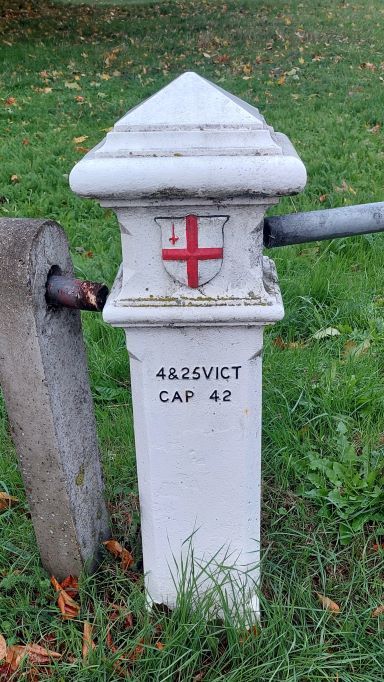
Coal imported into the City of London had been taxed since medieval times and, as it was originally all brought by sea to riverside wharfs, the collection of the duties was relatively easy. The City is a small (one square mile) but influential and rich part of London. The Port of London, within which the duties were payable, stretched far beyond the boundaries of the City, all the way along the Thames from Yantlet Creek (downstream from Gravesend) to Staines.
By the 19th century, however, there was increasing trade by canal and rail, and various Acts of Parliament extended the catchment area to include these new modes of transport. In 1845 the boundary was set at a radius of 20 miles from the General Post Office, London,[1] from Langley in the west to Gravesend in the east and from Ware in the north to Redhill in the south. In 1851 an Act permitted the erection of boundary markers to indicate where this boundary lay; and about fifty markers, inscribed with a reference to the Act, were erected.
In 1861 a further Act – the London Coal and Wine Duties Continuance Act 1861 – was passed, reducing the area to that of the Metropolitan Police District plus the City of London. This stretched from Colnbrook in the west to Crayford Ness, at the mouth of the River Darent, in the east, and from Wormley, Hertfordshire, in the north to Banstead Heath, Surrey, in the south. New marker posts (about 280) were erected to show the boundary within which the duty was payable. These again cite the Act by regnal year and chapter number, i.e. 24 & 25 VICT CAP 42. In some cases, notably on railways and canals, markers made for earlier acts were reused on the new boundary. Most (over 200) of these posts survive.[2] Although the title of the Act refers to wine duties, these were collected only in the Port of London: the boundary marks have no connection with the wine duties and it is incorrect to call them "coal and wine duty posts".
The purpose of the posts was to give notice of where the boundary ran so that no-one could claim ignorance of liability to pay the duties.
Near to the Coal Post is a sign with four words in large type(L1 to L4) and four words in a much smaller type (S1 to S4). using the number of letters in each word the cache can be found at
N51 21.L4 S4 L1 E 0 05. (S3-L2) (S2+L4) (S1-S4)
Checksum for the solution is 41
Please tuck the tied hanging bison back away out of sight